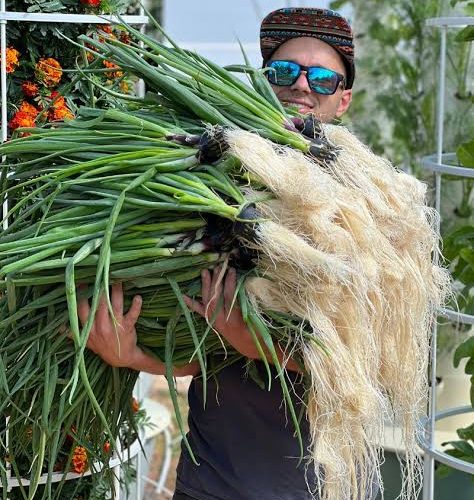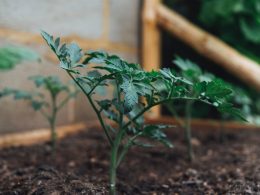Introduction
Hydroponic gardening is a new gardening trend that is transforming how we grow fresh produce at home or commercially. Among the easiest and most rewarding crops to cultivate using this soil-free technique are scallions (also known as green onions or spring onions). These versatile alliums thrive in nutrient-rich water systems and can be harvested multiple times from a single planting. If you’re interested in adding a crisp, mild onion flavor to your kitchen while maximizing space, learning about hydroponic scallions is a smart move.
This article explores the benefits of growing scallions hydroponically, the best systems for beginners and advanced growers, care and maintenance tips, and how you can start producing your own year-round supply.
Why Grow Scallions Hydroponically?
Scallions are an ideal candidate for hydroponics because of their shallow root systems, rapid growth cycle, and compact size. Here are some key benefits:
- Year-Round Production: With a controlled environment, you can grow scallions in any season. Whether it’s the middle of winter or a hot summer day, your hydroponic system ensures a consistent harvest.
- Faster Growth: Hydroponic systems deliver nutrients directly to plant roots, speeding up growth compared to traditional soil gardening. Scallions can mature in as little as 30 days after planting.
- Space Efficiency: Scallions don’t require much room. Vertical hydroponic systems or stacked shelves make it easy to grow dozens of plants in small areas, perfect for urban growers or indoor gardeners.
- Cleaner and Healthier Produce: Because they’re grown without soil, hydroponic scallions are free of dirt and require minimal washing before eating. They’re also less prone to soil-borne diseases and pests.
Best Hydroponic Systems for Scallions
Several hydroponic systems work well for scallions. The best one for you depends on your space, budget, and experience level.
- Kratky Method: A passive, low-maintenance system ideal for beginners. Scallions grow in containers filled with nutrient solution, and their roots gradually absorb water as it depletes.
- Deep Water Culture (DWC): This system suspends plants in a nutrient solution with an air pump providing oxygen. Scallions thrive in this environment and grow quickly.
- Nutrient Film Technique (NFT): Popular with commercial growers, NFT circulates a thin film of nutrient-rich water over the roots. It’s efficient, conserves water, and maximizes yields.
- Vertical Hydroponic Towers: For those with limited space, vertical towers let you grow scallions upward in columns, making the most of every inch.
Starting Scallions from Seeds vs. Sets
You can start hydroponic scallions either from seeds or from small onion sets (also called transplants).
- Seeds: Starting from seeds is cost-effective but takes longer to germinate. It’s best to use rockwool cubes, coconut coir, or another inert medium to sprout them before transferring to your hydroponic system.
- Sets or Cuttings: Many growers prefer using scallion sets or even kitchen scraps from store-bought green onions. Simply place the trimmed roots into your hydroponic medium, and they’ll regrow quickly.
Nutrient Requirements for Hydroponic Scallions
Scallions require a balanced nutrient solution with a focus on nitrogen for leafy growth. Here’s what to consider:
- pH Levels: Maintain a pH between 6.0 and 6.5 for optimal nutrient uptake.
- EC (Electrical Conductivity): Aim for 1.2–1.8 mS/cm for healthy development.
- Nutrients: Choose a hydroponic fertilizer formulated for leafy greens. Nitrogen, potassium, calcium, and magnesium are crucial for strong, flavorful stalks.
Regularly monitor your solution’s pH and EC to ensure your scallions get everything they need to thrive.
Lighting and Temperature
Scallions are relatively low-light plants compared to fruiting vegetables, but they still need consistent illumination for best results.
- Lighting: Provide 12–16 hours of light daily using full-spectrum LED grow lights.
- Temperature: Keep the environment between 65–75°F (18–24°C). Cooler temperatures slow growth, while extreme heat may cause wilting.
If growing indoors, ensure good airflow to prevent fungal issues and maintain plant health.
Harvesting Hydroponic Scallions
One of the great joys of hydroponic scallions is their “cut-and-come-again” nature. You can harvest the greens repeatedly from the same plant.
- Timing: Scallions are ready to harvest when they’re about 10–12 inches tall. This typically takes 30–45 days from planting.
- Method: Use scissors to snip the leaves about an inch above the base. The plants will continue to produce new shoots for multiple harvests.
- Continuous Supply: Stagger your plantings every couple of weeks to enjoy a steady supply of fresh scallions.
Troubleshooting Common Issues
While scallions are hardy, some challenges can occur in hydroponics:
- Yellowing Leaves: Often caused by nitrogen deficiency or pH imbalance. Test and adjust your nutrient solution.
- Stunted Growth: Could be due to insufficient light, overcrowding, or poor oxygenation in the root zone.
- Root Rot: Ensure proper aeration and avoid letting the roots sit in stagnant water.
Addressing these issues quickly ensures healthy, flavorful scallions.
Using Hydroponic Scallions in the Kitchen
Hydroponically grown scallions are tender, mild, and flavorful. They’re perfect for garnishing soups, salads, and stir-fries or adding a fresh kick to dips and spreads. Because they’re cleaner than soil-grown scallions, preparation is fast and easy.
Getting Started
Whether you’re an urban gardener looking to grow fresh greens at home or a small-scale farmer hoping to diversify your crops, hydroponic scallions are an excellent choice. With the right system, nutrients, and care, you can enjoy a continuous harvest of crisp, green onions year-round.
For more tips, supplies, and expert guidance on setting up your hydroponic system for scallions and other crops, visit rochesterhydroponics.net a valuable resource for all things hydroponic gardening.
Final Thoughts
Hydroponic scallions are a rewarding, low-maintenance crop that delivers fast results and consistent quality. They’re ideal for beginners because they grow quickly and adapt well to different systems, while advanced growers appreciate their high yields and market potential. With this guide, you now have the knowledge to set up your system, care for your plants, and enjoy fresh scallions on demand.
By investing a little time and attention into your hydroponic setup, you’ll soon be harvesting delicious, pesticide-free green onions that outperform anything you can buy at the store.












